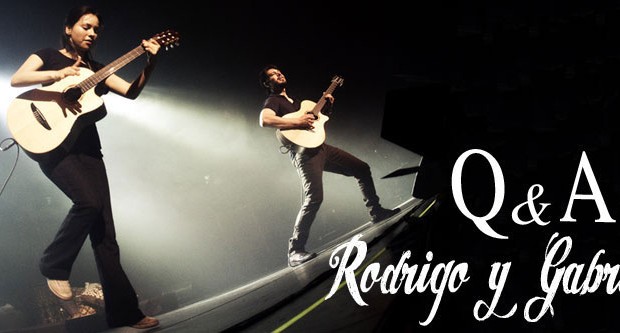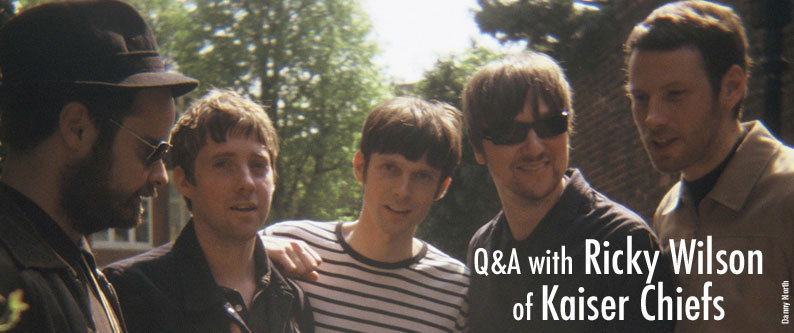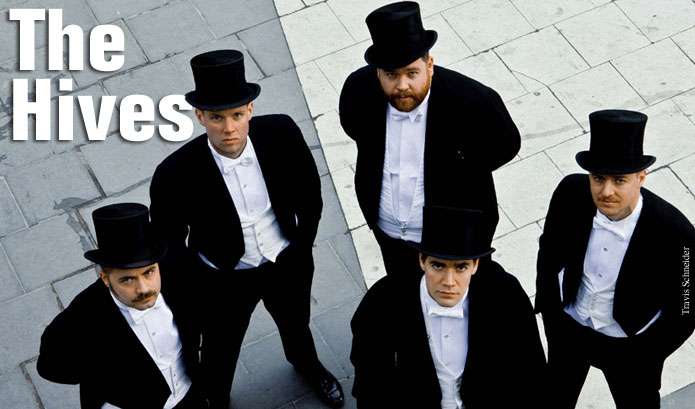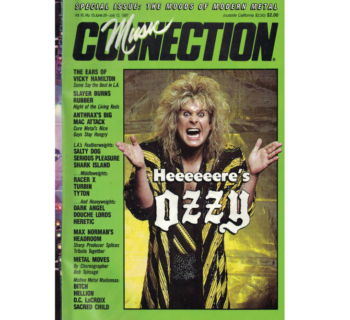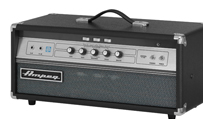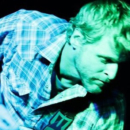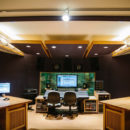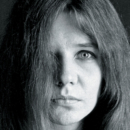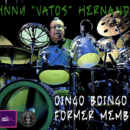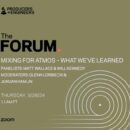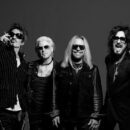By Oscar Jordan
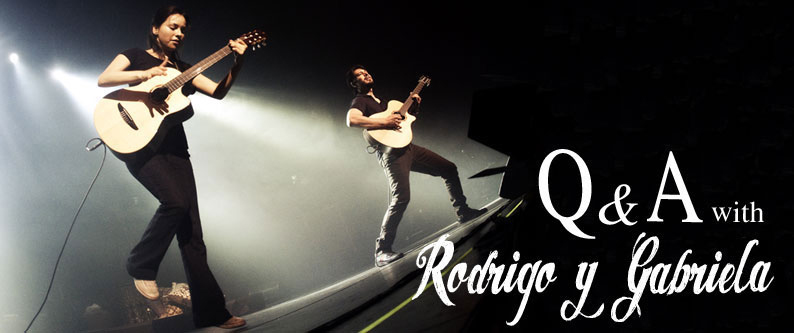
Rodrigo y Gabriela’s current release is an artistic move beyond their clever mix of stripped down acoustic flamenco and metal influences. The pair have enlisted the help of legendary producer Peter Asher, special guests, and a 13-piece Cuban orchestra to re-imagine some favorite compositions from their back catalog.
Having recorded the basic tracks in Havana, Cuba, the Mexican duo were able to absorb the local culture and collaborate with some of the world’s greatest musicians to create RyG’s most epic album to date. It’s a rich and expansive record blending the many sounds of Latin America with rock and the percolating energy of Miami’s Salsa scene. It is their first major collaboration of this magnitude, and the result is a hypnotically contagious record guaranteed to infuse you with soulful Latin rhythms. MC caught up with Rodrigo Sanchez to get the story on Area 52.
Music Connection: What gave you the idea to go to Havana and record with Cuban musicians?
Rodrigo Sanchez: It was very much an excuse to go there and learn from them. We wanted to come up with something different and see how much we could experiment and go away from our comfort zone.
MC: How did you come to the decision to re-work your older material instead of writing new material?
Rodrigo: When we decided to do this we were still touring on the 11:11 album and didn’t really have time to stop touring and write new material. So it was kind of appropriate for us to experiment with something that wasn’t going to do any harm. We didn’t have any expectations. We were sure we were going to learn something and didn’t really care too much about the fact that they were old songs, because it was the nature of the idea.
Now I can hear that we reinvented our tracks. Some of the tracks are totally different. So in a way, we did a lot of composition work as well, just in a different direction.
MC: Were you concerned with staying true to the original ideas in your compositions or did you just let all that go?
Rodrigo: We wanted to change them as much as possible. We knew people were going to say, “Why didn’t they write new music?” We knew our reasons, but not everybody was going to understand why, so I wanted to change it as much as possible. Even my original guitar solos––though they were respected in terms of bars, I just had to change the solos. I’m not playing the same solos I did on “Juan Loco.” I’m changing guitar sounds, using electric guitars, and lap steel guitar to give a different color to the project.
“Right after we leave the stage we go put our hands on ice for 20 minutes.”
MC: When it was time to choose the Cuban musicians, what was the process?
Rodrigo: At the time we were working on the Pirates of the Caribbean soundtrack and were spending a lot of time in Los Angeles. When I told the record label about the idea [of doing an album in Cuba] they liked it. They sent Pablo Herrera to Cuba. He was very knowledgeable about Cuban musicians and sent us Youtube videos of all the musicians. On Monday I would get five different flute players with bios from each one. It was great. That’s how we got it together.
MC: What was it like playing music with them and collaborating for the first time?
Rodrigo: It was beautiful. They have a different way to understand music. They’re much more based on theory. They all know how to read and write music on paper, and we don’t. We’re metal heads. It was a very interesting process to communicate with them.
The first thing I said to them when we arrived was, “We want to experiment with your rhythms. If you feel like we’re asking for very different things that you normally don’t play, that’s the way it is.” We didn’t know much about their rhythms. We come from rock. They liked that idea. They played the same thing for so many years that for them this was a challenge. They had to change the claves and the patterns, so that’s what we did.
It was great to see them struggling sometimes because they weren’t used to playing different patterns. Halfway through the recording they started to suggest mixing rhythms with different patterns. That’s what it was all about.
MC: Was there ever a problem because you couldn’t read music?
Rodrigo: We just played by ear. We’re so use to working like that. We’re fast at picking things up. In the end they were the ones who had to be more alert to what we were going to ask them. They were surprised that we didn’t know how to read music.
MC: How did you meet producer Peter Asher?
Rodrigo: We became really good friends during the Pirates of the Caribbean sessions. He is the guy we spent most of our lunch times and breakfasts with. He was in charge of the music. One day when I was going through all the music, I thought of Peter, and I asked him, “I’m doing this Cuban project, do you want to be part of it?” He looked at me and said, “Yeah.” We did it as friends. There were no record labels involved.
MC: He did a great job on it. He really captured a great live-in-the-studio sound.
Rodrigo: Yeah. We did a lot live and then we did some guitar overdubs in my studio. The band and my guitar were live.
“Gabriela and I never thought about doing a project with two guitars playing a little bit of Latin music and a little bit of metal. We were traveling Europe and playing on the streets, and that’s what came out.”
MC: You recorded the band in Havana and did the overdubs in Ixtapa, Mexico, on Pro Tools in your studio?
Rodrigo: Yeah. That’s what I have in my studio. Then we had to add other musicians as well. We had to go to London to record Anoushka Shankar and to Paris to record, then to L.A. to record drummer John Tempesta (the Cult, Testament, White Zombie). We had to record all the extra guests. But the first layers of the band with the acoustic guitars were all recorded in Havana.
MC: Did you pick up any fresh ideas or techniques that influenced your guitar playing?
Rodrigo: Yeah. Not techniques, but ideas. It’s different for me to play electric guitar on stage now after many years of playing only acoustic. I’m playing electric guitar solos and getting used to playing the lap steel guitar on stage as well. Those kinds of ideas are giving us a whole different perception of what we can do as a duo for making our next album. The most important thing is that it allows me to think it can be done without being afraid of going that route.
MC: The two of you play very physically demanding guitar, particularly Gabriela, because she uses the guitar as a percussive instrument. Considering that she had some playing injuries a couple of years ago, how do the two of you keep in shape to prevent injuries while on long tours?
Rodrigo: The basic thing we do is put our hands on ice after every show. Right after we leave the stage we go and put them on ice for 20 minutes. That prevents inflammation in the muscles. It’s not the same for other musicians, but running into the injuries that we’ve both had in the past, and seeing different specialists, in our case it works.
That’s what we’ve been doing and it’s what’s kept us away from going back into the injury area. The way we play it takes more physical effort. It’s more like an athlete instead of a normal musician. Some classical musicians have this as well, but it depends on the intensity of the player and the energy. In our case it’s keeping us away from injuries and it’s working.
MC: What kinds of challenges did you face when you were choosing management and a record label? What was most important when you were seeking representation?
Rodrigo: We’re kind of lucky because we’re still working with the first manager we started with in 2002. We’re with a nice independent label [ATO Records] and we’re licensed to the rest of the world. Luckily, when we have to license to labels in different countries, it hasn’t been trouble for us to decide. I think we had the right management from day one and we’re happy. They understand what we’re all about. It’s all about the music.
MC: Are you happy with your endorsement deals with Yamaha, which built a signature model for each of you?
Rodrigo: Yeah, absolutely. The company worked so hard getting these prototypes going. When they approached us, they followed us around to different countries, took the prototypes we were working on and saw how we were feeling them and soon on. The Piezo system is very complex. Obviously the system that we use live has to come direct from Yamaha Japan. There are ones that you can buy off the shelf that are simpler, but the ones that we actually use have to be ordered directly through Yamaha Japan.
It’s quite an amazing system. Even our guitar techs, they can do basic things with [it], but if the Piezo system breaks, it has to be sent to Japan. We have 14 guitars on the road and sometimes they break because of the way we play. It’s very delicate, but we have enough guitars that they have provided to cover us. We’re very happy.
MC: Let’s talk songwriting. When you and Gabriela are composing, who does what? Is the process different every time?
Rodrigo: I start the process of writing. I write all the melodies. Once I feel like I’ve written a melody that I think Gabriela is going to be interested in, or that suits the project, I show it to her. She then works on the harmonies or the rhythms that fit well with the melodies. Then together we start structuring the songs. If I have to go out and work on a solo, I do it on my own. She’s pretty much a kind of drummer and bass player, so the process is something we understand that works. We’re fine with it.
MC: Is there anybody who inspires you musically right now?
Rodrigo: Yes. My friend Anoushka Shankar has just released an album where she mixed her Indian roots with flamenco. I don’t know why this hasn’t been done before. The sitar with all these flamenco rhythms and instruments fit perfectly and sounds brilliant. And I think the parts she plays on my album are highlights. The sitar with the Cuban thing works very well.
MC: Before you and Gabriela formed your group, you guys were metal. Do you still consider yourselves metal heads? Do you still listen it?
Rodrigo: Of course! I just got an album from a new band from Colorado called Havok. They’re better than other new bands that try to play proper thrash metal, who are too polished and don’t send the message properly. I still listen to the stuff I grew up with––Megadeth, Testament and Sepultura.
MC: You and Gabriela found your style when you were in metal bands and then you moved out of metal. What do you say to musicians who seek to find their own voice that way?
Rodrigo: That’s a difficult question. I suppose you have to detach from the idea of thinking that you have to follow certain patterns. Gabriela and I never thought about doing a project with two guitars playing a little bit of Latin music and a little bit of metal. We were traveling Europe and playing on the streets, and that’s what came out. The only thing that we did commit to was to not to do anything else but play music. We didn’t go to Europe to work as a waiter and then use our extra hours playing guitar. It was like, “If we have to play for nine hours on the street too, that’s what we’re going to do.”
MC: Nine hours?!
Rodrigo: We didn’t have to play for nine hours, because it was enough to play for one hour to make money to pay for our room and for the beers (Laughing), and whatever we needed to secure ourselves. It was a commitment to the instrument and respect for the fact that that’s what we’re doing it for––and not because we’re looking for fame. That’s absolutely superficial.
MC: You seem to have a strictly organic approach.
Rodrigo: To come up with a project has to be something that’s natural. If you plan it too much, I think you’re fooling yourself. That’s my own experience. You have to follow your influences and feel it. You don’t have to follow the same patterns that other bands have done. I think there are many ways to succeed. I also feel you have to find something within yourself.
MC: Now that you’re successful, how do you keep your focus, direction and sanity?
Rodrigo: (Laughing) Well, I don’t know that we are actually able to maintain any of that. I think it’s because we’re older. If our success had happened 10 years ago it would have been more difficult. But I’m 38 years old now and I’m really conscious of what really matters in life. I know success is just a life situation, which could change in a second. Life is totally unpredictable and we have to enjoy whatever moments that are good.
I see it from a professional point of view. We can’t forget that this is only what we do in life. This has nothing to do with my true self. If I don’t have this [my music], I should be able to be at peace and happy. That would be, for me, very successful.
MC: So, it’s your life outside of music that keeps you grounded?
Rodrigo: Yeah. I want to be structured. Life happens inside of you. Whatever we do or whatever we think we are, behind all the labels we use I think we are all energy and we somehow can’t forget about that. If we are unhappy one day, we have to always come back to our true self and realize that that is home.
Contact Ken Weinstein, [email protected]

